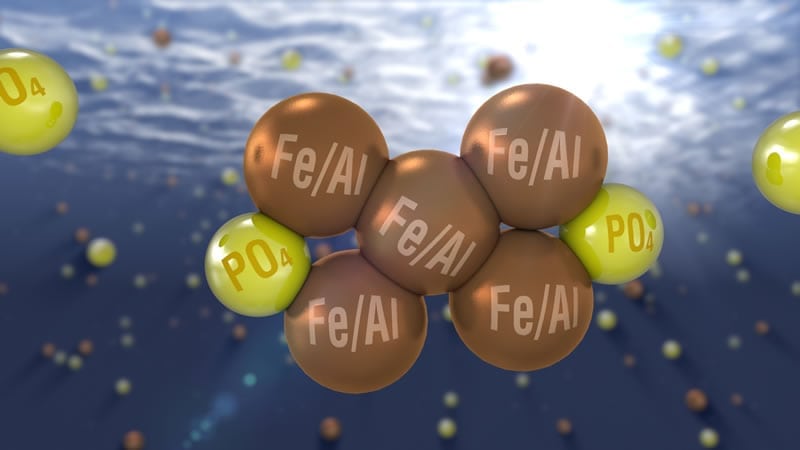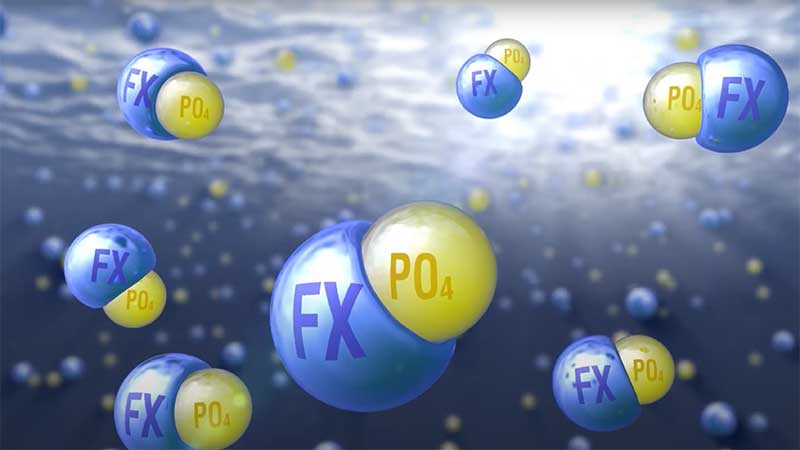Energy-efficient dewatering of sludge from phosphorus removal from wastewater
Phosphorus removal from wastewater to low total phosphorus (TP) limits, particularly less than 1 mg/L, produces sludge. How much sludge is produced and how easy or difficult the sludge is to dewater is determined by the coagulant used to remove phosphorus.
Switching to Neo WaterFX can improve dewatering efficiency for sludge from phosphorus removal
Switching your phosphorus removal coagulant to WaterFX can improve the efficiency of dewatering by reducing the length of time required for dewatering, which reduces the energy required to dewater the sludge. The efficiency is due to two main factors:
- Less sludge produced due to unique lanthanide attraction for phosphorus, and
- Less water trapped within the sludge, making dewatering faster and easier
When it comes to dewatering sludge, the less sludge you produce the better off you are
Traditional iron or aluminum-based coagulants remove phosphorus from wastewater by creating massive amounts of floc. This is because these coagulants have no strong chemical attraction to phosphorus so typically require dosages of 4 to 8 molecules (or even more) of Fe or Al coagulant per molecule of phosphorus. The lower the limit, the more of these coagulants you need to add, and that adds to your chemical phosphorus sludge loading.


By comparison, due to its strong attraction to phosphorus, WaterFX can be fed in almost a 1 to 1 molecule FX to molecule P ratio. That alone significantly reduces the amount of chemical sludge produced. The lower your TP limit, the bigger the benefit.
Quality of sludge also factors into dewatering efficiency
The second factor contributing to more efficient dewatering is the quality of the sludge. Traditional coagulants create fluffy flocs that trap large quantities of water. This “bound water” is difficult to squeeze out of the floc, often requiring large doses of polymer to try to break the water attraction. This polymer adds even more mass to the final sludge and is only partially successful in freeing and extracting the water. The final result? Large quantities of sludge with a higher water content, making for longer and slower dewatering runs as you try to press or spin that excess water out of the sludge.
Because of the strong attraction, lanthanide creates a dense, crystalline solid with phosphorus rather trapping it in a floc. The water around these crystals is “free water” that drains away or is squeezed out easily without large doses of polymer. Yes, you may still need to add some polymer to help dewater the biosolids from your aeration treatment system, but the chemical sludge from your phosphorus removal won’t be adding to that dosage. The result is less mass and a drier, denser sludge. Since the water is more easily released from the sludge, the dewater cycle times can be reduced and still produce a drier sludge.
Reduced total run time, and faster, less frequent dewatering run cycles
These two factors mean that with Neo WaterFX, you have less total sludge that is easier to dewater. Therefore, you can run your belt filter press or centrifuge faster and for shorter periods of time. That makes your sludge dewatering process much more efficient and saves energy – which saves money. Lower quantities and drier sludge can also significantly lower disposal costs.
Do you want efficient dewatering and lower disposal costs?
If you remove phosphorus from wastewater, you owe it to yourself to investigate Neo WaterFX. Our engineers can help you evaluate if it will improve your phosphorus removal, increase the efficiency of your sludge dewatering process, save energy, and reduce your sludge disposal costs. Bottom line, we can save you money both in energy costs and disposal costs. Contact us today.


